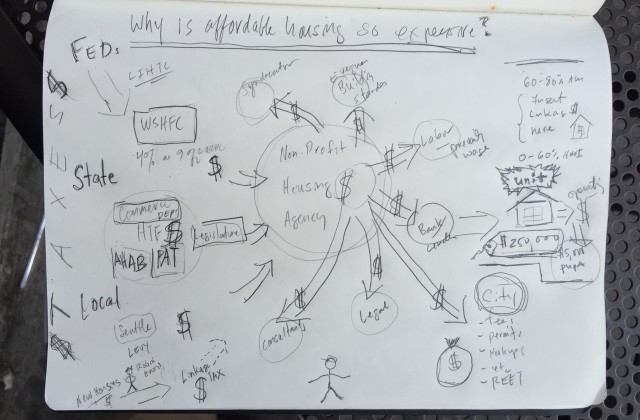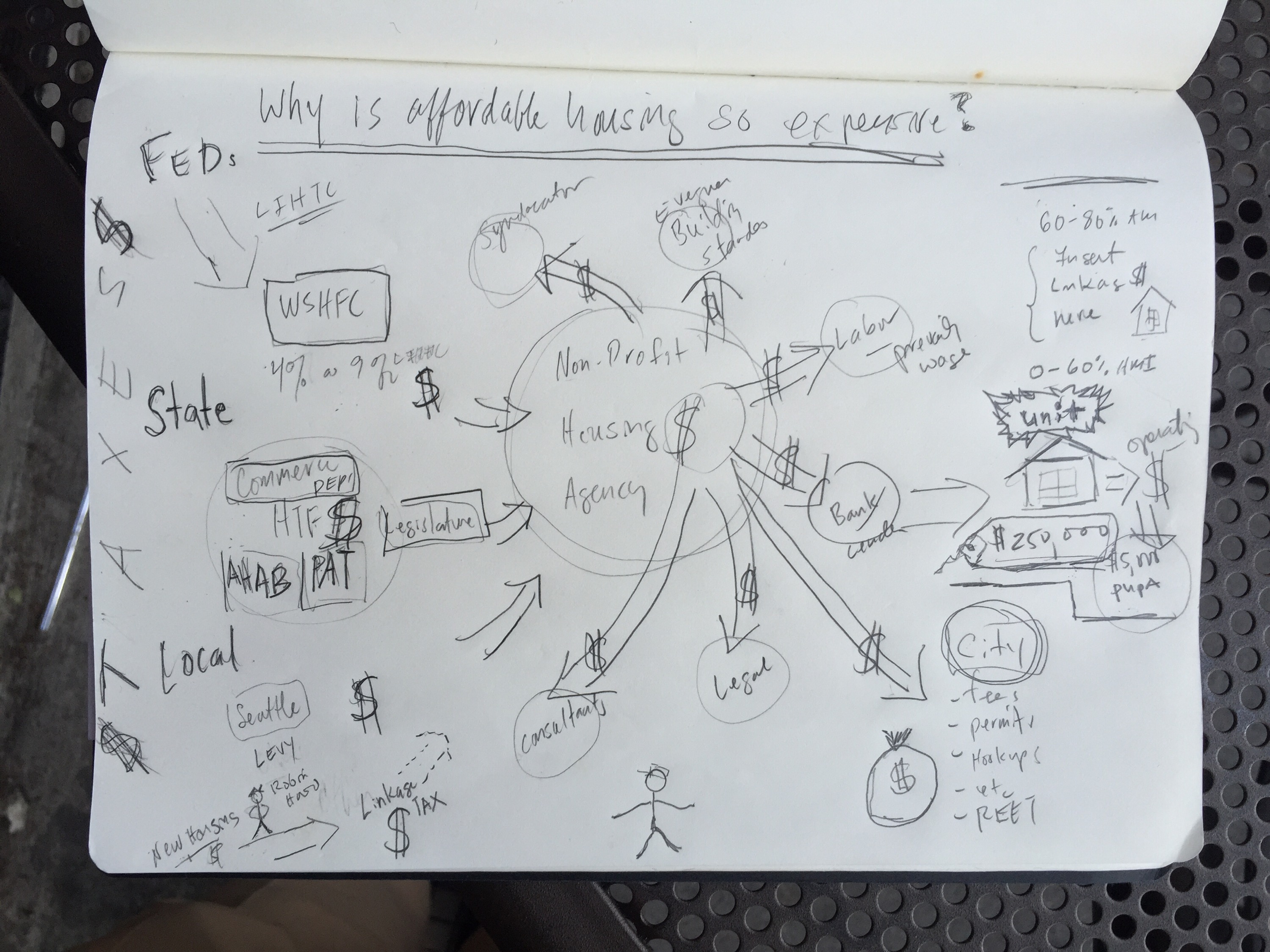Why is Afforable Housing So Expensive
I used to be, for a short time and one project, a non-profit housing developer. While I did that job it validated everything I had written about development in general: regulation and limits on density make housing more expensive to build. The difference between my world then and a market rate developer is that a non-profit housing developer can’t raise rents to off set costs; those rents are fixed. The only place to go is more subsidy. A market rate developer can raise rents but only so high; the market can only bear so much rent.
But essentially, aside from the sources of funding the two–subsidized and market rate housing–are the same, right? Sort of. Affordable subsidized housing with tax credits and government funds is more expensive to build. Why? Because there are even more costs than those imposed by regulations and limits on production. Based on a study done a few years back by the Washington State Commerce Department,
Soft costs associated with project management, reserves, and fees, were S486,371 higher for the affordable housing project primarily due to higher operating reserves, permitting, and finance fees
And here’s a chart showing a comparison of costs in market rate and affordable projects.

Per unit housing costs vary widely, but there is broad agreement about the fact that subsidized housing is more expensive to build. But that doesn’t stop policy makers from wanting to take money away from market rate developers and give it to non-profit housing developers: I’ve called it the Robin Hood Syndrome, the idea that the only way to solve price problems is to raise taxes on market rate housing and give that money to affordable housing developers.
I’m working on a more visual representation of why this makes no sense aside from the fact that a linage tax will just make market rate housing more expensive, the very thing that sparks the urge to tax new housing in the first place. So I sketched out this drawing. It’s a first step, but based on the image I think we’re getting close to a more visceral representation of why we need to make all housing easier to build in Seattle, not more complicated and expensive by taxing it and using the money inefficiently.



